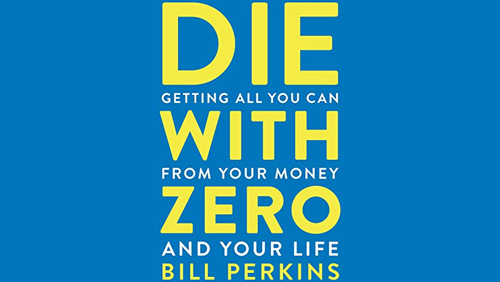
It’s tempting to write to a captive audience during something as serious as a global pandemic. If you’re penning a mystery, then making it apocalyptic could be the temptation, after all, readers will know exactly where you’re headed. If you’re writing a poker book, it might be a bestseller if you focus on how to make the most of a dwindling bankroll as real-life costs and day-jobs fluctuate.
That’s not the case with this week’s Poker in Print subject, however, as Bill Perkins’ Die With Zero makes the case for how you should be trying to lose all your money before you leave this world. Well, sort of.
Bill Perkins is not only a fascinating guy, but one of poker’s most charismatic players. If you’ve never watched him play, it might be fair to say that you’re out of the loop when it comes to high rollers, as Perkins is loaded and not afraid to mix it with the big boys, even if his poker resume is slightly less impressive than his business one.
Perkins has cashed for over $5.4 million in live events, yet has only cashed 10 times in his lifetime, in numbers terms that can’t be ideal for the kind of buy-ins he plays. Yet he is a highly talented player, finishing 3rd in the 2013 One Drop High Roller event for $1.9 million, 4th in an EPT Super High Roller the year after for another $470,368 and 6th in last year’s Triton Million for Charity event, earning himself another $2.6 million.
Those are terrific results, but if you’ve thought that Bill Perkins may die a rich man, you might be surprised that he has no intention of doing so.
In Die with Zero, Perkins explains his theory for life, essentially, that you want to die with absolutely nothing, having lived a life rich in memories and leaving your kids to experience the same fulfilled journey across seventy summers or thereabouts.
On the face of it, the book is one suited for the philosophy aisle in your nearest library, but because of Perkins’s business expertise, it would probably be more appropriate to label it self-help as his career has been one of startling success.
In a bid to stop those with money “over-saving and under-living” what Perkins suggests might sound like risks not worth taking in these times. But in some senses, the arrival of a global pandemic, something Perkins could never have seen coming during the writing of the book – serves to bolster the opinions within the book and make them even more unique.
Perkins himself, of course, lives a fairly idyllic life on the surface and has incredible funds to divvy up. The notion of this to many who don’t will be lost on some readers and during times of such financial strain, that is understandable. The number of those people with disposable income is shrinking, meaning terms like a ‘spend curve’ and ‘personal interest rate’ could fall on deaf ears. That’s completely understandable too.
Living it large during such globally challenging times ay seem to go against the grain of society right now, but in truth it goes against the perceived wisdom anyway, that’s the essence of the book’s persuasion and Perkins makes a convincing case for leaving yourself with nothing at the very end, although health plans for the elderly and the associated costs would make planning that ‘zero point’ at exit the kind of calculation even an elite high rolling poker player might struggle to make accurately.
Being present, living your life for now and planning less for death than you should for life, however, are strong lessons from the former Wall Street Trader and now semi-retired businessman. Plenty of the book is very convincing and makes a lot of sense, and it is all well written.
At 243 words, it’s not going to take you very long at all to glean plenty of valuable information from a very intelligent, persuasive man. Overall, we’d recommend reading Die with Zero, which is available now on e-book for £13.64, or around $18.





